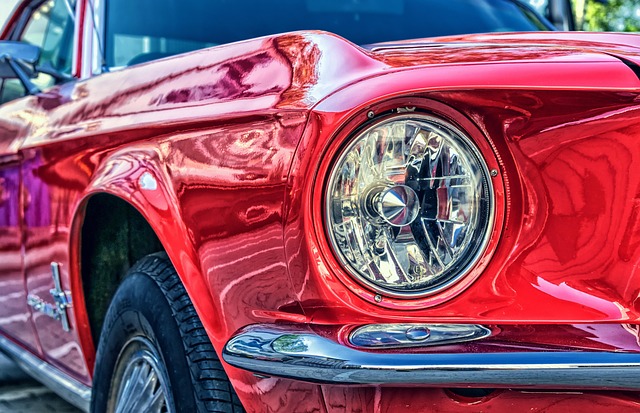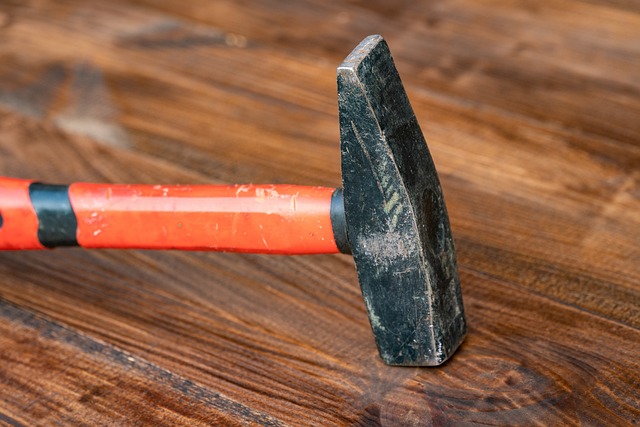PDR for Aluminum Panels: Eco-Friendly Repairs Simplified
PDR (Paintless Dent Repair) is a specialized technique that uses advanced tools and trained technici…….
In the realm of construction and architecture, the quest for lightweight, durable, and environmentally friendly materials has been a driving force behind innovation. Among the various materials gaining traction, Polymer-based Direct-to-Metal (PDR) coating on aluminum panels stands out as a game-changer in the industry. This article delves into the intricacies of PDR for aluminum panels, exploring its definition, global impact, economic implications, technological advancements, regulatory landscape, and future prospects. By the end, readers will gain a comprehensive understanding of this technology’s significance and its potential to revolutionize building practices worldwide.
Definition: Polymer-based Direct-to-Metal (PDR) coating is a cutting-edge process that involves applying a polymer resin directly onto aluminum panels, providing an exceptional finish and enhanced performance. This method eliminates traditional painting techniques, offering a more efficient, durable, and aesthetically pleasing alternative.
Core Components:
Historical Context: The concept of PDR coating for aluminum gained traction in the late 20th century as researchers sought more sustainable building solutions. Early developments focused on improving the corrosion resistance and aesthetics of aluminum panels without compromising their structural integrity. Over time, technological advancements have led to a more sophisticated process, offering a range of color options, textures, and functional coatings.
Significance: PDR for aluminum panels offers numerous advantages over traditional coating methods:
The adoption of PDR for aluminum panels has spread across continents, driven by a growing awareness of sustainability and the unique benefits this technology offers.
| Region | Trends and Adoption |
|---|---|
| North America | The US and Canada have been early adopters, with a focus on green building initiatives. Major construction companies are increasingly specifying PDR-coated aluminum for commercial and residential projects due to its energy efficiency and aesthetic appeal. |
| Europe | European countries, particularly Germany and the UK, have embraced PDR as a key component of their transition towards more sustainable construction practices. Stringent environmental regulations have spurred the industry to explore eco-friendly alternatives, making PDR a preferred choice. |
| Asia Pacific | China, Japan, and Australia are leading the charge in Asia, with rapid urbanization driving the demand for lightweight, durable building materials. PDR aluminum panels are gaining popularity in high-rise buildings and infrastructure projects due to their structural efficiency. |
| Latin America | Brazil and Mexico have shown significant interest in PDR technology, aligning with their growing focus on renewable energy and sustainable development. |
| Middle East & Africa | The Gulf Cooperation Council countries are investing heavily in green building initiatives, fostering the adoption of PDR for its long-term environmental benefits. In Africa, the rise of smart cities is driving demand for advanced building materials, including PDR-coated aluminum. |
These global trends indicate a growing consensus that PDR for aluminum panels is not just a niche solution but a critical component in the transition towards more sustainable and environmentally conscious construction practices worldwide.
The economic implications of PDR for aluminum panels are multifaceted, affecting manufacturers, builders, and consumers alike.
Market Dynamics:
Investment Patterns:
The continuous evolution of technology has significantly enhanced the capabilities and applications of PDR for aluminum panels.
These technological advancements position PDR for aluminum panels as a dynamic and adaptable solution, poised to meet the evolving needs of architects, designers, and builders worldwide.
The regulatory environment plays a crucial role in governing the production, use, and disposal of PDR-coated aluminum panels, ensuring compliance with environmental standards and safety regulations.
International Regulations:
Regional Guidelines:
Despite its numerous advantages, PDR for aluminum panels faces challenges and criticisms that must be addressed to realize its full potential.
Main Challenges:
Proposed Solutions:
The following case studies illustrate successful applications of PDR for aluminum panels, highlighting the technology’s versatility and impact.
Case Study 1: Eco-Friendly High-Rise in Singapore
A prominent real estate developer in Singapore constructed a 30-story residential building using PDR-coated aluminum panels for both exterior cladding and interior design elements. The project achieved a Green Mark Platinum rating, the highest recognition from the Building and Construction Authority (BCA) of Singapore. The PDR coating contributed to the building’s exceptional energy efficiency, enhanced aesthetics, and reduced environmental impact, setting a benchmark for sustainable high-rise development in the city-state.
Case Study 2: Sustainable Airport Terminal in Germany
Frankfurt Airport commissioned a new terminal building constructed primarily from PDR-coated aluminum panels. The design incorporated dynamic color-changing PDR coatings, creating an immersive visual experience for passengers. Beyond aesthetics, the PDR coating provided superior protection against harsh weather conditions, ensuring the long-term integrity of the structure and reducing maintenance costs.
Case Study 3: Architectural Landmark in Tokyo
A renowned architectural firm in Japan designed a unique cultural center with exterior walls featuring intricate PDR patterns. The project won numerous awards for its innovative use of materials and exceptional aesthetic appeal. The PDR coating not only enhanced the building’s visual impact but also provided a durable, low-maintenance surface, setting a new standard for architecturally advanced aluminum cladding in Japan.
The future of PDR for aluminum panels appears promising, with emerging trends and strategic considerations shaping its trajectory.
Potential Growth Areas:
Emerging Trends:
Strategic Considerations:
PDR for aluminum panels has evolved from a niche concept to a powerful tool in the construction industry’s quest for sustainability and efficiency. Its global impact and widespread adoption attest to its ability to transform building practices while delivering exceptional performance, durability, and aesthetic appeal.
As we move forward, the continuous evolution of technology, ongoing research, and growing environmental awareness will further solidify PDR’s position as a key enabler of sustainable construction. The future prospects for PDR-coated aluminum panels are promising, with potential applications in smart cities, offshore structures, transportation, and more, driving innovation and shaping a greener built environment.
Q: What makes PDR coating more environmentally friendly than traditional painting?
A: PDR coatings eliminate the need for multiple layers of paint, reducing the environmental impact associated with VOC emissions and waste generation. The direct application method minimizes material wastage, and the long-lasting protective layer reduces the frequency of repainting, contributing to a lower carbon footprint.
Q: How do PDR coatings withstand harsh weather conditions?
A: Advanced polymer resins used in PDR coatings provide excellent resistance to corrosion, UV radiation, moisture, and chemicals. These coatings are designed to withstand extreme temperatures and environmental stressors, ensuring the longevity of aluminum structures even in challenging climates.
Q: Can PDR coating be customized to meet specific design requirements?
A: Absolutely! PDR technology offers exceptional design flexibility. Manufacturers can create custom colors, textures, and patterns to meet architectural visions. With ongoing advancements, dynamic and interactive coatings that change appearance based on environmental factors are also within reach.
Q: What is the expected lifespan of a PDR-coated aluminum panel?
A: With proper installation and maintenance, PDR-coated aluminum panels can last for several decades, surpassing the lifespan of traditional painted surfaces. The durable protective layer resists fading, flaking, and corrosion, ensuring the integrity and aesthetic appeal of the structure over time.
Q: How does PDR technology contribute to energy efficiency in buildings?
A: PDR coatings can significantly reduce heat gain in buildings through their reflective properties, thereby decreasing cooling loads and improving overall energy efficiency. Additionally, the long-lasting nature of these coatings means less frequent replacement, further minimizing energy consumption associated with building maintenance.

PDR (Paintless Dent Repair) is a specialized technique that uses advanced tools and trained technici…….

Paintless Dent Repair (PDR) is a specialized technique ideal for fixing dents and scratches on vehic…….

Paintless Dent Repair (PDR) is revolutionizing car body repair, especially for aluminum panels in mo…….

Paintless Dent Repair (PDR) is a specialized technique for restoring damaged aluminum panel vehicles…….

Auto body professionals must understand that PDR (Paintless Dent Repair) on aluminum panels isn'…….

PDR (Paintless Dent Repair) tailored for aluminum panels is a specialized technique used in modern v…….

Paintless Dent Repair (PDR) is an innovative, cost-effective, and eco-friendly method for repairing…….

PDR (Paintless Dent Repair) is a revolutionary, non-invasive method for repairing dents and scratche…….

Paintless Dent Repair (PDR) is an eco-friendly, cost-effective solution for restoring damaged alumin…….